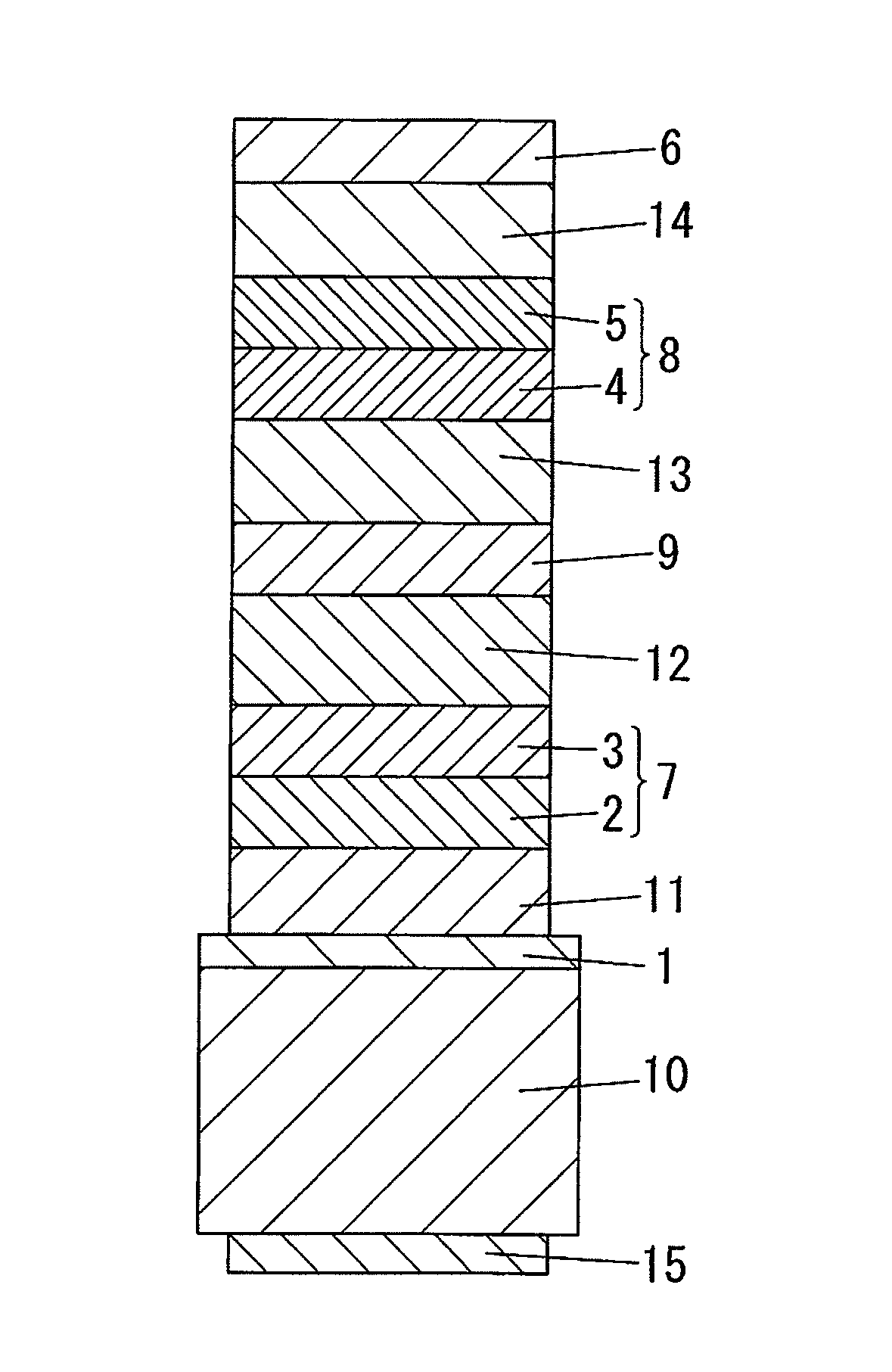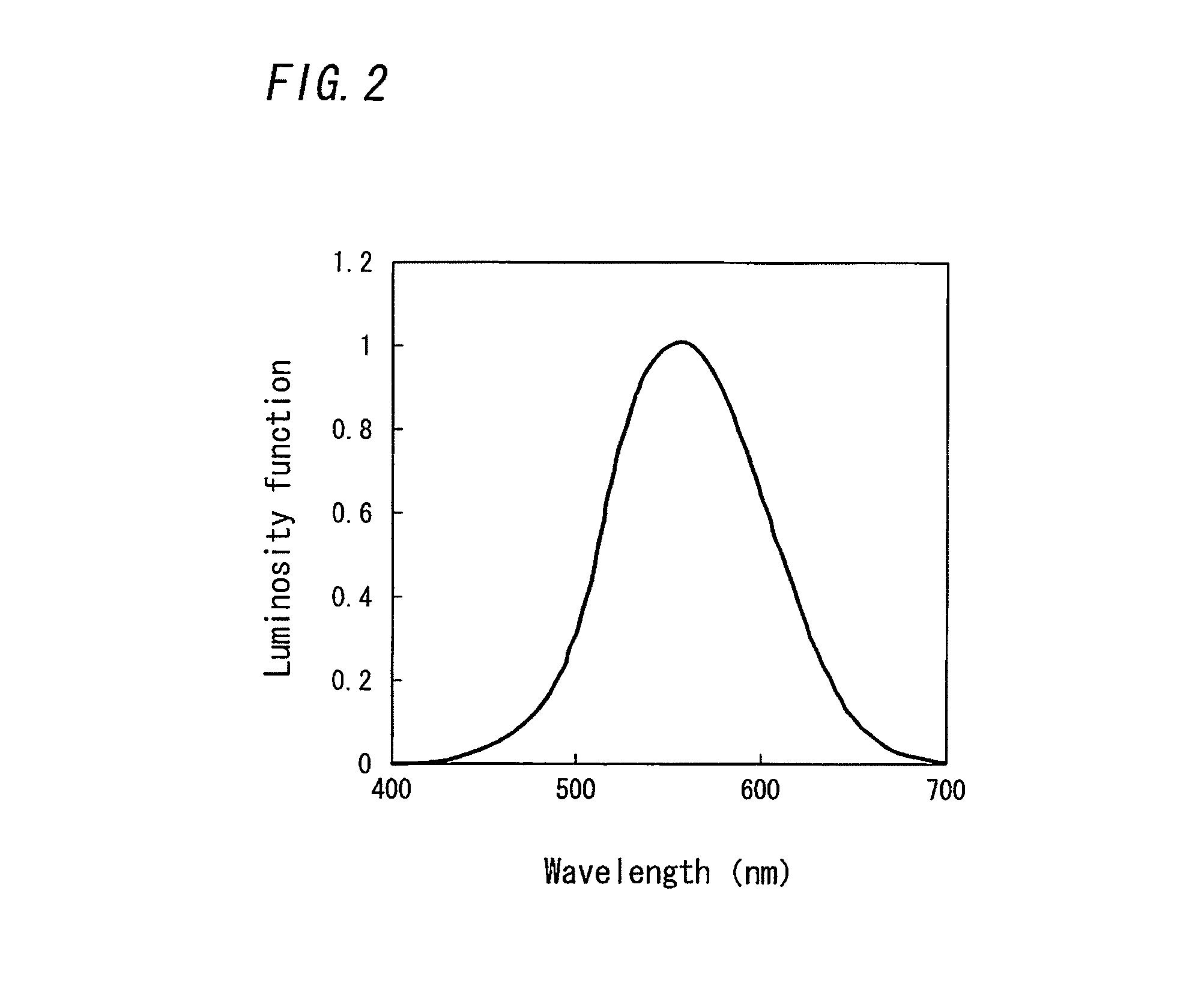Organic electroluminescent element
a technology of electroluminescent elements and organic materials, applied in the direction of organic semiconductor devices, thermoelectric devices, solid-state devices, etc., can solve the problems of chromaticity change tending to increase, problems that remain in order, etc., and achieve suppressed luminance and high luminance
- Summary
- Abstract
- Description
- Claims
- Application Information
AI Technical Summary
Benefits of technology
Problems solved by technology
Method used
Image
Examples
example 1
[0047]An organic electroluminescent element as shown in FIG. 1 was prepared. Specifically, a transparent electrode 1 was formed by depositing ITO with a thickness of 130 nm on a substrate 10 (a glass substrate). A first hole transporting layer 11, a blue fluorescent light-emitting layer 2 (containing BCzVBi as a blue fluorescent light-emitting material), a green fluorescent light-emitting layer 3 (containing TPA as a green fluorescent light-emitting material) and a first electron transporting layer 4 were further formed by a vapor deposition method with a thickness between 5 nm and 60 nm on the transparent electrode 1 in this order. Next, an intermediate layer 9 having a layer structure of Alq3 / Li2O / Alq3 / HAT-CN6 was stacked with a layer thickness of 15 nm. Then, a second hole transporting layer 13, a red phosphorescent light-emitting layer 4 (TAZ as a host material doped with Ir(piq)3 which is a red phosphorescent light-emitting material), a green phosphorescent light-emitting layer...
example 2
[0050]An organic electroluminescent element was prepared in the same manner as in Example 1, except that the film thickness (tR) of the red phosphorescent light-emitting layer 4 was set to 5 nm and the film thickness of the green phosphorescent light-emitting layer 5 was set to 35 nm.
[0051]With regard to the organic electroluminescent element obtained with the aforementioned manner, a result of a continuous drive with initial luminance of 3000 cd / m2 shows that the emission intensity of the green phosphorescence is increased relative to the emission intensity of the red phosphorescence and the luminance lifetime is prolonged.
example 3
[0052]An organic electroluminescent element was prepared in the same manner as in Example 1, except that the film thickness (tR) of the red phosphorescent light-emitting layer 4 was set to 10 nm and the film thickness of the green phosphorescent light-emitting layer 5 was set to 70 nm.
[0053]With regard to the organic electroluminescent element obtained with the aforementioned manner, a result of a continuous drive with initial luminance of 3000 cd / m2 shows that the emission intensity of the green phosphorescence is increased relative to the emission intensity of the red phosphorescence and the luminance lifetime is prolonged. Note that the drive voltage is increased with an increase in the film thickness (tG) of the green phosphorescent light-emitting layer 5.
PUM
 Login to View More
Login to View More Abstract
Description
Claims
Application Information
 Login to View More
Login to View More - R&D
- Intellectual Property
- Life Sciences
- Materials
- Tech Scout
- Unparalleled Data Quality
- Higher Quality Content
- 60% Fewer Hallucinations
Browse by: Latest US Patents, China's latest patents, Technical Efficacy Thesaurus, Application Domain, Technology Topic, Popular Technical Reports.
© 2025 PatSnap. All rights reserved.Legal|Privacy policy|Modern Slavery Act Transparency Statement|Sitemap|About US| Contact US: help@patsnap.com



